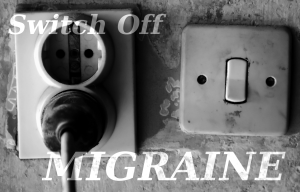TRPV4 and “Switching Off” Headache Pain
Imagine an old-fashioned but complex machine, based on switches. When you turn on switch A, for example, it supplies power to switches AA, AB, and AC. If you want power to go through these switches, you must turn them on. And so there is a complicated interaction of hundreds of switches.
Don’t worry, that’s about as complicated as this article is going to get. If you grasp the idea of the interaction of switches, that’s enough to understand the analogy.
 |
So what would happen if a switch got stuck? Well, if it were stuck in the “on” position, you wouldn’t be able to stop the power flow through that switch. If it were stuck in the “off” position, neither that switch nor any down the line would ever get power.
This is an over-simplified way to understand the way that some messages are sent through the body. Each cell, for example, relies on something called “ion channels”, proteins which allow a flow of information through the wall of the cell. Imagine it as a switch.
But what would happen if the protein wasn’t properly “programmed”? It might let too much information through, or not enough. It could get “stuck”.
Migraine research is focusing more and more on specific types of ion channels. Consider this statement from a 2011 article in BMC Medicine:
We could now be at a watershed moment in this respect, as the genetic loci associated with typical forms of migraine are being revealed. The genetic discoveries are the latest step in the evolution of our understanding of migraine, which was initially considered a cerebrovascular condition, then a neuroinflammatory process and now primarily a neurogenic disorder. Indeed, the genetic findings, which have revealed ion channels and transporter mutations as causative of migraine, are a powerful argument for the neurogenic basis of migraine.
Many common migraine medications affect ion channels, such as verapamil and topiramate (Topamax).
But researchers are continually looking to new frontiers. And one of these is the investigation into TRPV4, (a nice name for Transient receptor potential cation channel subfamily V member 4). We know that TRPV4 is related to the sending of pain messages in the body. Might it be involved in headache pain?
One of the interesting discoveries that researchers made was the link between TRPV4 and sunburn. When TRPV4 is blocked, so is the sunburn pain (see Could discovery lead to end of sunburn pain?).
Trigeminal pain, often manifesting in face pain or headache, also seems to be closely related to TRPV4 (see TRPV4 is necessary for trigeminal irritant pain and functions as a cellular formalin receptor.).
A study published last year in Cephalalgia specifically looked at headache, and found that TRPV4 working in the tissue around the central nervous system (meninges) could actually contribute to migraine pain.
Is it possible that the hot pain of many headache conditions could be stopped with the flick of the TRPV4 switch?
Of course, it’s not that easy in real life to find the right switch and turn off pain without causing other problems. And TRPV4 is one of only 30 channels in only on category.
We do know that various factors, such as environment (for example being exposed to chemicals in the air) can turn switches like TRPV4 on and off. In other words, we’re not talking about flipping a switch that was never meant to be switched. It could, for example, be that certain factors, in people with migraine, are flipping switches too often. Perhaps a certain medication could put it back to normal.
This is a huge area of research, but we’re already using medications that involve ion channel “switching”. Better understanding the switches helps us better understand headache and pain disorders, and directs us to the most likely methods of treatment.
If you want to dive even deeper into this topic, check out:
- The Role of TRP Channels in Migaine (pdf) 2013
- New directions in migraine (pdf) 2011
- Pain channelopathies 2010
- TRPA1 and other TRP channels in migraine 2013
- What is Migraine? (the scientific story) 2008
